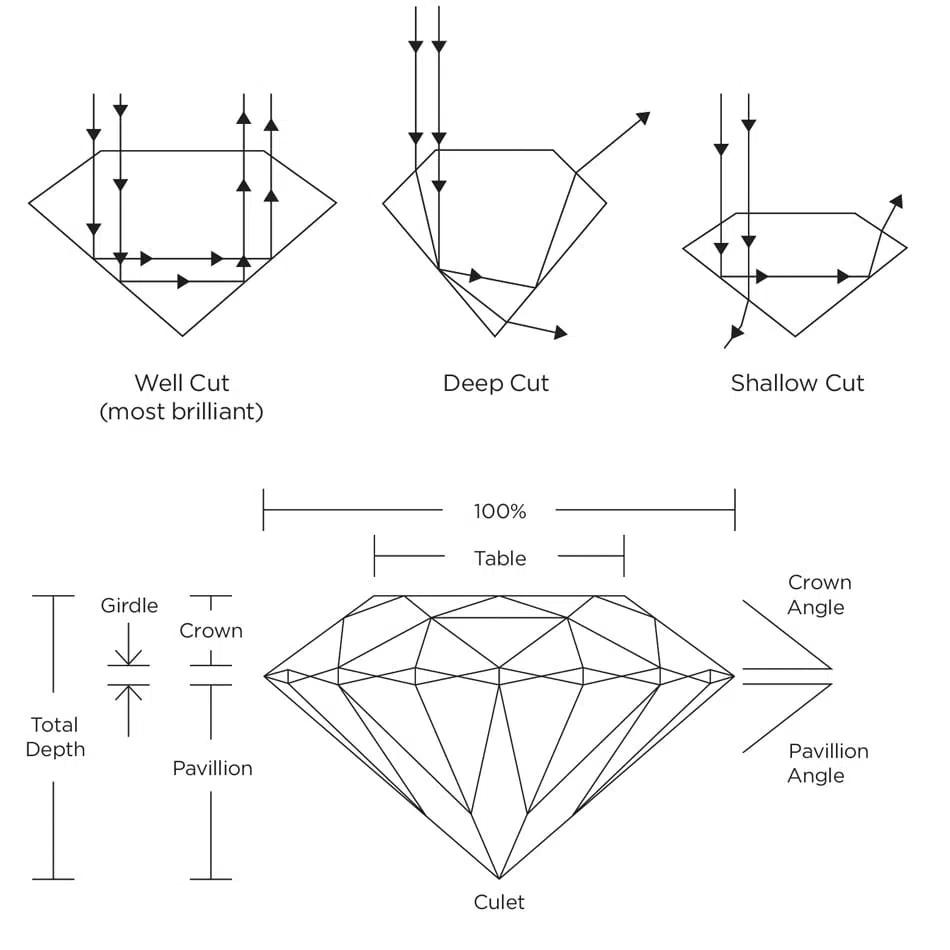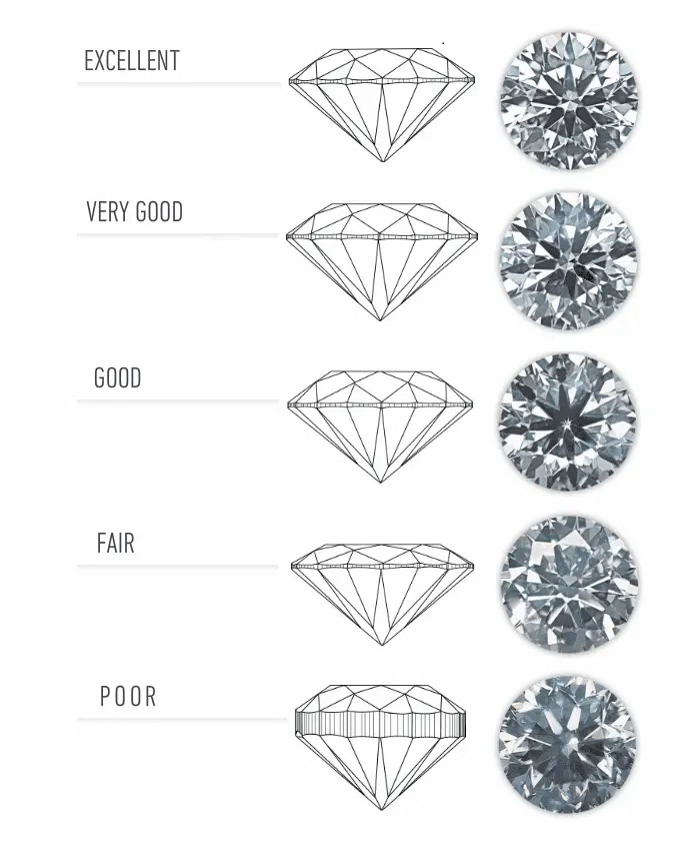Knowledge About Diamond Cut

The brilliant glitter and light transmission of diamonds is well known. Although we frequently associate a diamond’s cut with its shape (round, heart, oval, marquise, pear), the true meaning of a diamond’s cut is the way its facets interact with light. To shape a stone in such a way that its symmetry, polish, and proportions produce the amazing light return that is only achievable in a diamond, precise creativity and craftsmanship are needed.
The ultimate beauty and worth of a diamond are determined by its cut. It is also the most intricate and challenging to evaluate technically of all the diamond 4Cs. We computes the proportions of those facets that affect the diamond’s face-up look in order to determine the cut grade of the standard round brilliant diamond, the form that predominates in most diamond jewelry. With the help of these proportions, We are able to determine the ideal cut for a diamond by examining how well a diamond combines light to produce desired visual effects, like:
- Brightness: A diamond’s ability to reflect both internal and external white light
- Fire: The scattering of white light into all the colors of the rainbow
- Scintillation: The amount of sparkle a diamond produces, and the pattern of light and dark areas caused by reflections within the diamond
A well-cut diamond will exhibit the following characteristics:
Proportions: The proportions of a diamond refer to the angles and relative sizes of its facets. The most critical proportions include table size, crown height, pavilion depth, girdle thickness, and total depth. These proportions affect how light enters and exits the diamond, ultimately influencing its brilliance, fire (dispersion of light into colors), and scintillation (sparkle).
Symmetry: Symmetry refers to the precision of the diamond’s cut and how well-balanced its facets are. A diamond with excellent symmetry will have facets that align perfectly and reflect light uniformly. Symmetry also affects the diamond’s overall appearance and can impact its brilliance and sparkle.
Polish: Polish refers to the smoothness and quality of the diamond’s surface. A diamond with excellent polish will have no visible scratches, nicks, or polishing lines on its facets. A high-quality polish ensures that light can pass through the diamond unimpeded, enhancing its brilliance and sparkle.
The Gemological Institute of America (GIA) and other gemological laboratories grade diamond cut on a scale ranging from Excellent to Poor. The cut grade takes into account the diamond’s proportions, symmetry, and polish to assess its overall quality. The specific criteria used to determine the cut grade may vary slightly between different grading labs, but they generally evaluate factors such as brightness, fire, scintillation, and overall visual appeal.
Here’s a brief overview of the cut grades commonly used by the GIA:

